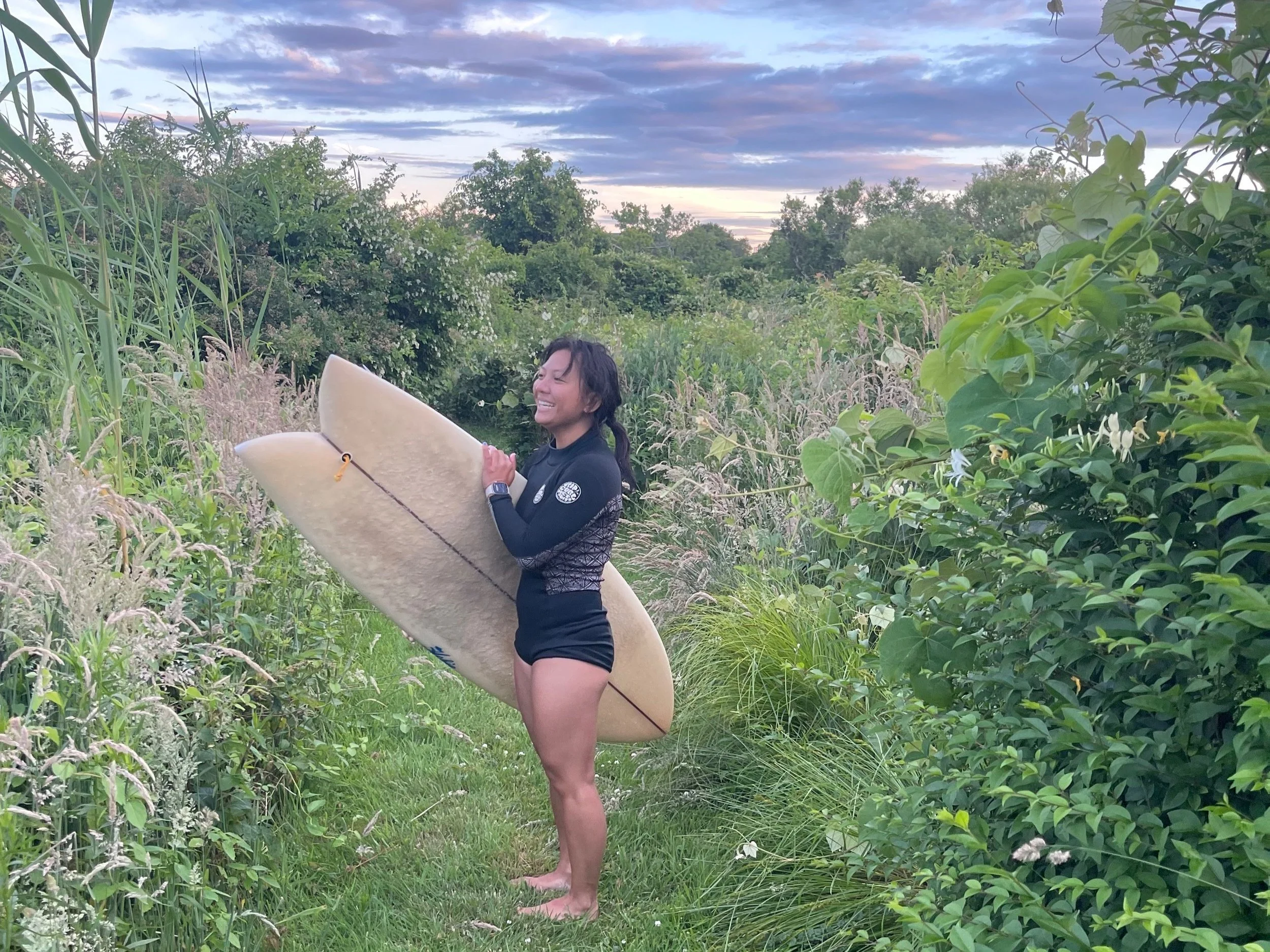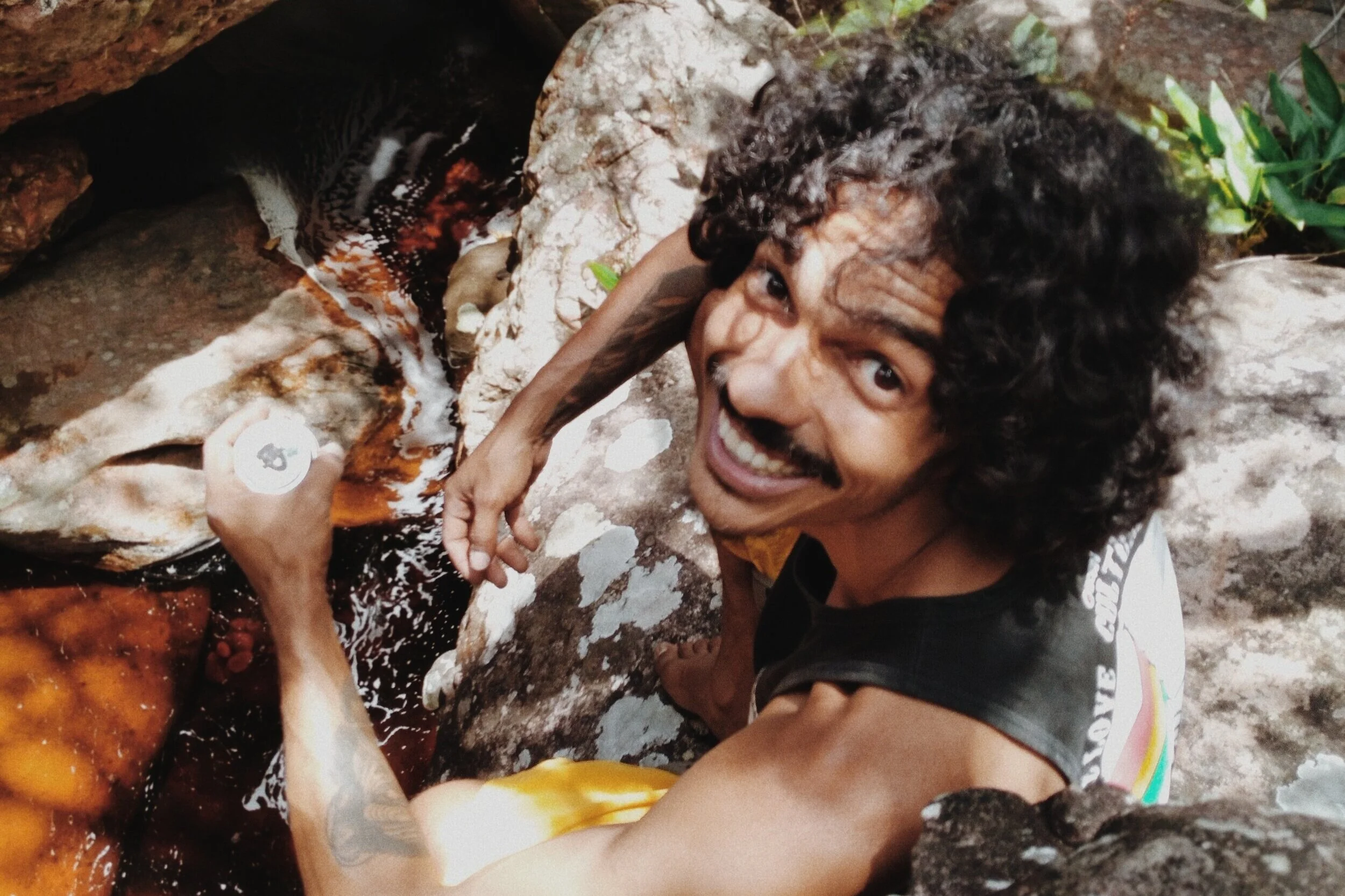7 South Asian Women Redefining Outdoorsy
Getty Images
Happy Women’s History Month! This month we’re celebrating women and gender expansive femmes of color along with their contributions to outdoor recreation. Within the South Asian diaspora, more and more women are redefining what it means to be outdoorsy. They are breaking records, challenging stereotypes, and writing their own narratives — all while centering community and gender equity.
Here are seven outdoorsy South Asian women you should be following on social media:
1. Gowri Varanashi
Gowri Varanashi, 33, is the founder of Climb Like A Woman (CLAW), a women’s climbing meet-up based in India. She’s also the founder of Wilderness Ways which takes children and adults into the outdoors to help them reconnect with nature.
A friend encouraged her to learn to climb after witnessing Gowri scale a tree with ease in the Peruvian Amazon. At the time, Gowri was working as an eco-tourism guide. After a year or so of rock climbing indoors, she began climbing outside and fell in love with the sport.
According to Gowri, Climb Like a Woman creates a space for participants to “get outdoors” and “come together as Indian women”. It’s not just about breaking barriers, it’s about “changing the narrative” and creating mutual support.
Her advice for other Women of Color who want to try new outdoor sports is to bring a friend, or to join a class or meetup. When it comes to climbing, Gowri also recommends staying grounded in the moment. “Focus on the fun you’re having and the experience,” she added. “Once we try to push ourselves, we begin to realize how capable we are of achieving great things!” She feels climbing is a beautiful sport. You can learn more about Gowri’s love for climbing on Instagram.
2. Oorbee Roy
Oorbee Roy, 49, is the Toronto-based, viral content creator behind the TikTok account @auntyskates where she posts drop-ins and sari skateboarding videos. Growing up in New Jersey, Oorbee wasn’t allowed to have a bicycle because her parents were very strict. However, she still found ways to stay active outdoors.
Skateboarding entered her life through her husband and children who are also skaters. Oorbee would go to the local skatepark with her family and decided one day that she wanted to join in on the fun. At the age of 43, she took her first skateboarding lesson and never looked back.
Since then, Oorbee has built a global community of adult skaters through skate clubs, local parks, and travel. Now, she teaches adults how to skate by leading retreats and skate clinics. She loves teaching and helping others transform their lives by becoming their biggest cheerleader.
Oorbee believes skateboarding is an opportunity to improve your mental health. It’s one way that she’s invested in her own healing. It’s also allowed her to tap into the younger version of herself who loved the outdoors.
Her advice to people over the age of 40 who want to learn to skateboard is to take lessons and join a skate club. She also recommends purchasing gear at a local skateboard shop (instead of online). To learn more about Oorbee’s skateboarding retreats, follow @auntyskates on Instagram and TikTok.
3. Ramnik Kaur
Ramnik Kaur, 22, is a Sikh hiker, student, and video content creator from Alberta, Canada. She is also the creator of Kaurs’ Club, an adventure community connecting Sikh women through faith, sisterhood, and the outdoors.
As a kid, Ramnik spent a lot of time outdoors riding bikes, collecting bugs, and sledding. She loved being outside with her friends. Ramnik also participated in swimming, indoor climbing, and taekwondo but dreamt of exploring and testing herself in the outdoors.
When she initially began hiking, she didn't buy any special gear. Instead, she hiked in regular clothing and runners, and used a school backpack. On her first backcountry camping trip, the only items she bought were a tent and stove. It’s a relatable experience for many first-time hikers who show up with what they have—not with a full gear closet.
Her love of the outdoors sometimes felt isolating because people who looked like her didn’t spend a lot of time there. As a turban-wearing Sikh woman, Ramnik didn't know many other Kaur (Sikh women) who prioritized nature, and outdoor activities.
The need for community pushed her to found the Kaurs’ Club. It has also led to many special moments like the backcountry camping trip she recently hosted. The trip included several first-timers. “On the way back to the trailhead it started pouring rain,” said Ramnik. “Instead of stopping, everyone let their inner child free.” The group played in the rain, making the hike back one of her favorites to date. To learn more about Ramnik’s journey, follow her on Instagram and TikTok.
4. Divya Maiya
Divya Maiya, 39, is a dancer, skier, and video content creator from Minnesota. Online, she’s known for filming bhangra, or “Bollywood-style” dances with family and friends. Her social media also includes viral videos of Divya downhill skiing in a blue and gold sari. Her love of dance and joyful movement show there’s more than one way to stay active outdoors.
Divya is also the co-founder of nonprofit South Asian Arts & Theater House (SAATH), which celebrates diversity through dance. Growing up in India, Divya loved dancing whenever she found time to practice between team sports and competitive swimming.
After coming to the U.S., Divya joined the dance team at her university, reigniting her passion. However, she found it difficult to find community as a South Asian woman in Minnesota.
She began reaching out to places with the offer to teach dance. That led her to participate in large community theater. The community she’s created is not only a performing arts community, they have a lot in common like the outdoors, food, friendship, and family.
Divya has a newly found passion for skiing. It was intimidating in the beginning to learn to ski as an adult but now she loves the sport and is thrilled to represent South Asian culture on the slopes. For Divya, representation matters because she doesn't see a lot of people who look like her. Follow her on Instagram and TikTok to learn more.
5. Dr. Swati Varshney
Photo credit: David Wybenga
Dr. Swati Varshney, 35, enjoyed playing outside as a child, especially running through the woods with her friends. Her family wasn’t “outdoorsy” in the traditional sense – they didn’t go camping or hiking and no one was a skydiver. However, her parents instilled a sense of adventure in other ways, particularly international travel.
Swati went on a tandem skydive with friends for the thrill of it, to try something new. During that first jump, she fell in love with the sensation of free fall. It was unlike anything she’d experienced before. She didn’t know too much about skydiving but she knew she had to do it again! After a second tandem, Swati immediately began working on her solo license.
To date, Swati has completed more than 1,200 jumps and has no intentions of slowing down. She has accomplished a lot in the past 14 years of skydiving, to include participating in invitation-only training camps for skydiving world record jumps. And she has found a welcoming community through Sisters in Skydiving (SiS) events.
Swati, who holds a Ph.D. from M.I.T in materials science and engineering, is looking forward to what’s next. This year, she’s embarking on a journey with two other veteran skydivers to train for ‘the world’s first woman-led mission to the edge of space.’ Hera Rising is not only the next stratospheric skydive, its team members — all Women of Color — are determined to break multiple records for altitude, free fall and crewed balloon flight. Along the way, they’re bringing awareness to women and girls in STEAM education.
You can follow their story on Instagram and at risingunited.org.
6. Jevi Majid
Jevi Majid, 42, lives in Oslo, Norway, and is a licensed running coach, ultra-marathoner, and a mother of two girls. A New Year’s resolution kickstarted her running journey with a focus on fitness and mental health. At the time, she couldn’t afford a gym membership, so she started running outside instead.
Jevi initially ran in an old pair of shoes but, once she learned more about the sport, she invested in a good pair of running shoes, to avoid injury. Her advice to new runners is to not focus too much on gear and apparel at the start and to buy secondhand when possible.
After months of running, she got into organized races. Her first race was a bitterly cold 10K that she didn’t particularly enjoy. “It was excruciating,” she recalled. “But I thought…I can do hard things. I can achieve what I put my mind to.” Fifteen months after starting her fitness journey, Jevi ran the London Marathon.
Jevi noticed how few women there were from minority ethnic backgrounds in her community. That realization motivated her to create #diversityinrunning on social media for BIPOC women in the UK. Jevi now volunteers as a run leader and strongly advocates that women run to support their physical and emotional health. Jevi also started a project collecting used running shoes for minority groups so they could start their running journey because she didn’t want expensive gear to be an obstacle. Follow her on Instagram, to learn more about her journey.
7. Ambika Rayyagor
Did you know that 25% of the population has some form of disability? Ambika, 28, is the founder of Disabled & Outdoors. She’s using her voice to improve trail and park access for mobility aid users. “Incorporating accessibility shouldn’t be an extra thing”, Ambika explained. “It should be the bare minimum.”
Some of Ambika’s fondest experiences are with her sister Devika who is an acute myeloid leukemia survivor with physical and neurological disabilities. Their family is passionate about spending time together outdoors — often in national parks. That hasn’t always been easy. She recalled instances when they traveled to the beach and wanted to take Devika out on the sand but were limited by the lack of beach wheelchairs. After deep research, she was able to find places that rented equipment but it was often expensive and sometimes the wheelchairs were nonfunctioning.
Ambika hopes that, by creating better representation for disabled people (and family caregivers), accessibility will no longer be an afterthought. When she sees her sister’s eyes light up with happiness after touching a tree in the forest, feeling the sand between her toes on the beach, or watching the Yosemite Firefall, she knows that she’s on the right path. Learn more about Ambika’s work with Disabled & Outdoors on Instagram.






















Esther Park is on a mission to help women in skydiving fit in–literally.
She left a comfortable job in scientific sales after a life-changing skydiving accident. Since then, she founded a company, Girls in Sky Places, to help women find correctly-sized gear.